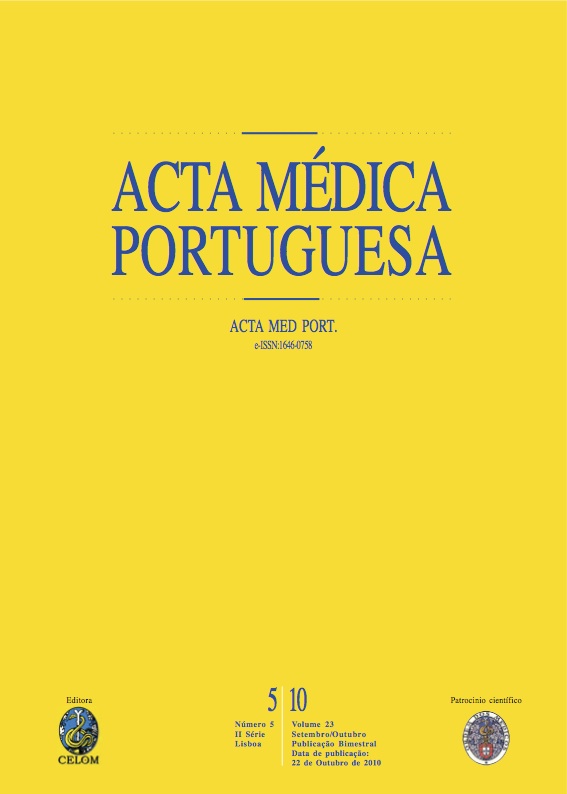Avaliação do balanço azotado no doente queimado.
DOI:
https://doi.org/10.20344/amp.712Resumo
The burn injury probably represents the largest stimulus for muscle protein catabolism. This state is characterized by an accelerated catabolism of the lean or skeletal mass that results in a clinical negative balance of nitrogen and muscle wasting. The determination of an appropriate value for protein intake is essential, since it is positively related to the nitrogen balance (NB) and accordingly several authors argue that a positive NB is the key parameter associated with nutritional improvement of a burn patient.Evaluation of the degree of protein catabolism by assessment of the Nitrogen Balance; Defining of nutritional support (protein needs) to implement in patients with burned surface area (BSA) = 10%.We prospectively evaluated the clinical files and scrutinized the clinical variables of interest. The NB was estimated according to three formulae. Each gram of nitrogen calculated by the NB was then converted into grams of protein, subtracted or added to protein intake (or administered enteric or parenterically) and divided by kg of reference Weight (kg Rweight), in an attempt to estimate the daily protein needs.The cohort consisted of 10 patients, 6 females, with average age of 58(23) years old, a mean of BSA of 21.4(8.4)%, ranging from a minimum of 10.0% and máximum of 35.0%. On average, patients were 58 (23) years old. The average number of days of hospitalization in the burn unit was 64.8(36.5) days. We observed significant differences between the 3 methods used for calculating the NB (p = 0.004), on average the NB was positive. When the formula A was used the average value of NB was higher. Regarding the attempt to estimate the needs of g prot/kg Rweight/day most of the values did not exceed, on average, 2.6 g Prot/kg Rweight/day and no significant differences between patients with a BSA% of 10-20% and with BSA% > 20% were found.Despite being able to estimate the protein catabolism through these formulas and verifying that most values were above zero, wide individual fluctuations were visible over time. Based on the sample reference that recommends a value of 1.5-2 g Prot/kg Rweight/day, we can conclude it to be underestimated, when comparing with the mean value of 2.6 g Prot/kg Rweight/day we established.Downloads
Downloads
Como Citar
Edição
Secção
Licença
Todos os artigos publicados na AMP são de acesso aberto e cumprem os requisitos das agências de financiamento ou instituições académicas. Relativamente à utilização por terceiros a AMP rege-se pelos termos da licença Creative Commons ‘Atribuição – Uso Não-Comercial – (CC-BY-NC)’.
É da responsabilidade do autor obter permissão para reproduzir figuras, tabelas, etc., de outras publicações. Após a aceitação de um artigo, os autores serão convidados a preencher uma “Declaração de Responsabilidade Autoral e Partilha de Direitos de Autor “(http://www.actamedicaportuguesa.com/info/AMP-NormasPublicacao.pdf) e a “Declaração de Potenciais Conflitos de Interesse” (http://www.icmje.org/conflicts-of-interest) do ICMJE. Será enviado um e-mail ao autor correspondente, confirmando a receção do manuscrito.
Após a publicação, os autores ficam autorizados a disponibilizar os seus artigos em repositórios das suas instituições de origem, desde que mencionem sempre onde foram publicados e de acordo com a licença Creative Commons









